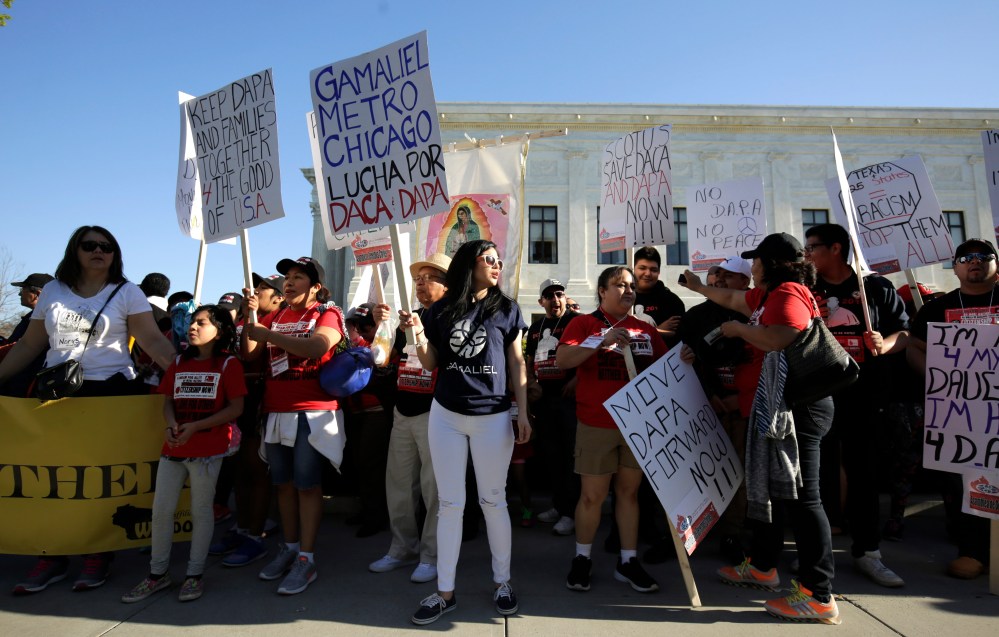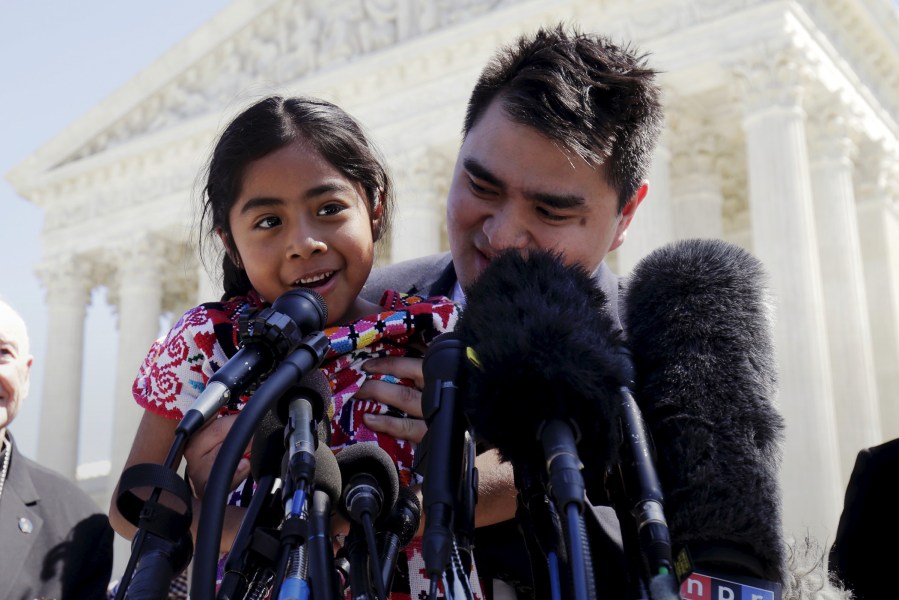WASHINGTON — With the Supreme Court appearing deeply divided over the fate of President Obama’s deportation plan, the future of U.S. immigration policy has been plunged into uncertainty, likely placing the onus on the next administration to offer up a new solution to a dysfunctional system.
Justices’ reactions to oral arguments on Monday fell largely along ideological lines, raising the risk that Obama’s executive actions may never see the light of day. A 4-4 split from the Supreme Court would lock in a lower court ruling and keep the programs frozen, likely through the president’s final term.
In the immediate aftermath, a loss for the administration would signal a devastating blow to the nearly 5 million undocumented immigrants who stood to gain work authorization and a temporary shield from deportation through the programs, known as DACA+ and DAPA.
RELATED: Supreme Court seems divided on Obama immigration showdown
In the long-term, a split decision would undermine Obama’s attempt to lay the groundwork for future immigration policies, which have taken a detailed and welcoming approach toward the millions of immigrants who currently live and work in the U.S. without documentation.
Heading into oral arguments, the administration and its allies appeared exceedingly confident that they would ultimately pass the Supreme Court test and that the government would be able to accept applications to the programs before the president left office.

They argue that the lawsuit challenging the executive actions is purely political. Obama faced fierce political opposition when he first announced his initiatives in 2014. And it’s no coincidence that all 26 states that brought the lawsuit are led by Republican governors. Meanwhile, California, a deep blue state with the largest undocumented immigrant population in the country, is not involved.
The linchpin in the case is whether states have a right to sue in the first place. The 26 states argue that they would face a substantial burden from Obama’s executive actions, pointing to Texas as an example, which would have to provide hundreds of thousands of new driver’s licenses under DACA+ and DAPA.
The four liberal-leaning justices on the court sought to poke holes in the state’s argument, questioning whether substantial monetary costs in issuing driver’s licenses were enough to undercut the immigration programs as a whole.
Instead, they sought to get at the heart of the real reasons that the states wanted to destroy DACA+ and DAPA — they don’t want undocumented immigrants to be legally allowed to work.
“What you should be attacking is not DAPA. What you should be attacking is the work authorization regulations that the [Department of Homeland Security], or before that the INS, has had for 30 years,” Justice Elena Kagan said.
How the justices address the issue of Texas’ legal standing will likely play the central role in the court’s ultimate decision, expected by late June. Chief Justice John Roberts in the past has paid great deference to standing and placed a high bar on the merits to sue. But he, along with the other conservative justices, appeared to believe that Texas’ potential financial burdens were legitimate.
“Isn’t losing money a classic case for standing?” Roberts asked.
Obama blamed congressional inaction for being his central reason justifying his immigration actions. Because Congress failed to pass comprehensive immigration reform, Obama said it was his duty to act on his own and offer a solution within his limited powers.
RELATED: 2016 throws a wrench into blockbuster Supreme Court case on immigration












